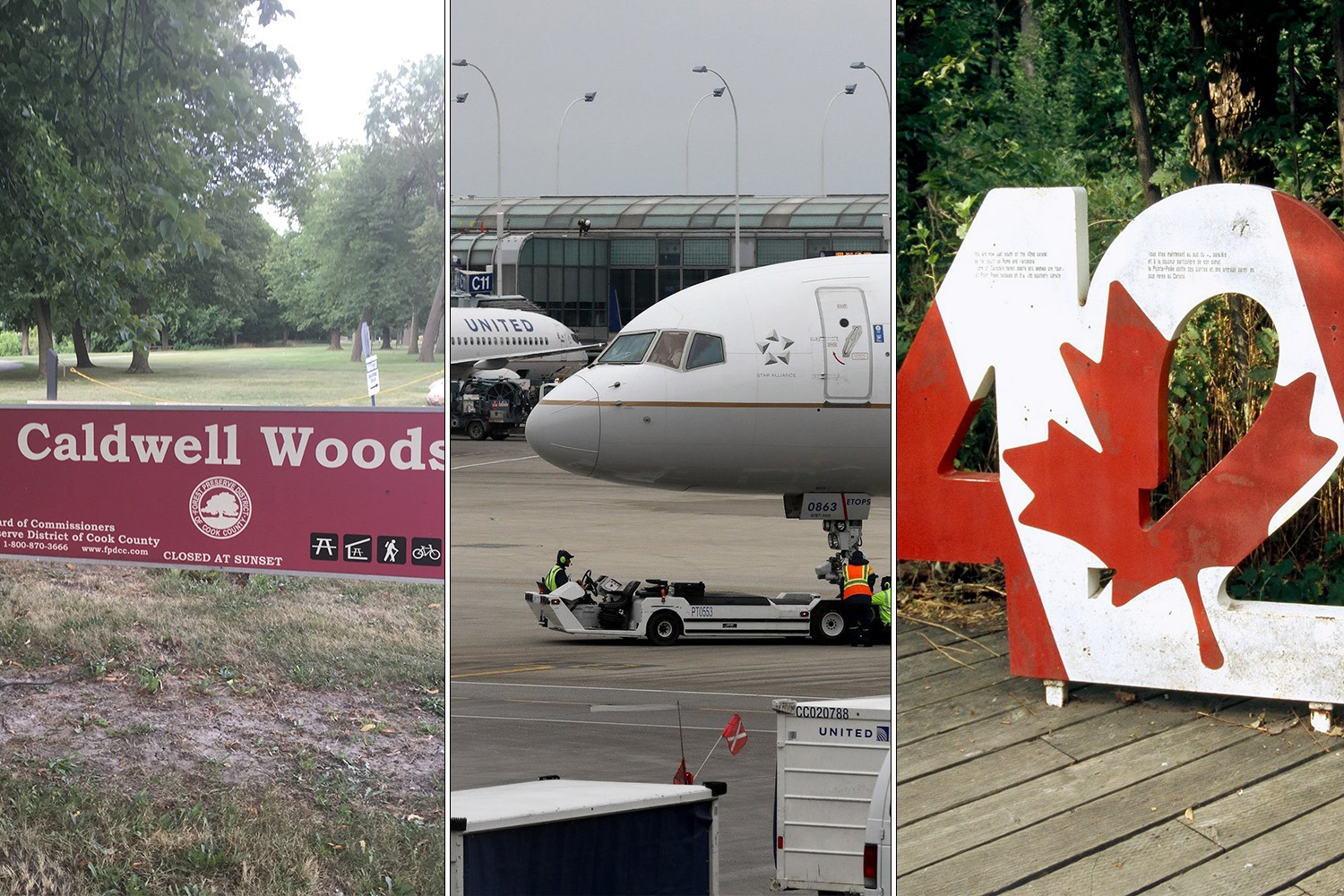The 42nd parallel is not a commonplace line of latitude. It was the northern border of New Spain and thus, today, of California, Nevada, and Utah. It divides New York and Pennsylvania. At Point Pelee National Park, in Ontario, a “42” statue stands beside a hiking trail, signifying one of the few spots in mainland Canada south of that line.
Another reason the 42nd parallel is well worth reading about: It runs through Chicago. Author John Dos Passos titled the first volume of his U.S.A. Trilogy The 42nd Parallel because much of the action takes place here, as it did in so many early 20th Century naturalistic novels.
But where exactly in Chicago can the 42nd parallel be found? I discovered its location quite by accident, when I installed a Latitude/Longitude app on my phone. The app gave the coordinates of my home as 42.00037 degrees north. The 42nd parallel had to be very close. I walked south through my alley, watching the numbers to the right of the decimal dwindle until I arrived at the grassy strip between the street and the sidewalk, on the north side of Arthur Avenue, between Clark Street and Glenwood Avenue. That was 42 flat. To commemorate my discovery, I photographed my Dos Passos novel set edgewise on the ground, and posted it on Instagram as “The 42nd Parallel on the 42nd parallel.”
After that discovery, I wanted to find out what else the 42nd parallel passes through in my neighborhood. I took my phone a few blocks east, to the campus of Loyola University. According to the app, the Halas Recreation Center, a student gym, and the Loyola Information Commons, a library, are both at 42.00000.
Chicago’s geographic coordinates didn’t just inspire Dos Passos. There’s a 42 Parallel marketing agency on Jackson Boulevard, and there was once a 42 Degrees North Latitude breakfast joint in Ravenswood.
The 42nd parallel encircles the world, obviously. It’s 16,104 miles long. (Not as long as the equator, which is 24,901 miles long.) Rogers Park is only a mile or so of that. To find the other locations with which we share a latitude, I turned to Google Maps. Right click any location, and the website will provide coordinates. Here in Chicago, the 42nd parallel also passes through the Bryn Mawr Country Club, Green Park on Lehigh Avenue, and Caldwell Woods. After it crosses Lake Michigan, 42N makes landfall at Grand Mere State Park in Michigan. It leaves the United States at Truro, Massachusetts, on Cape Cod, then commences on a very exotic journey around the world.
The 42nd parallel’s first stop on the other side of the Atlantic is Pontevedra, Spain, just north of the border with Portugal. Then it passes through: Portugal, the Mediterranean Sea, Italy, Montenegro, Albania, Kosovo, North Macedonia, Bulgaria, Turkey, the Black Sea, Georgia, Russia, and a whole lot of -stans: Kazah-, Turkmeni-, Uzbeki-, and Kyrgyz-. It makes a long trip through China, grazes Mongolia and North Korea, and ends its Asian journey in Japan.
(One cannot help but notice — and find distressing — that even though Chicago is exactly as far north as Spain, it’s a hell of a lot colder. In February, the average high temperature here is 35 degrees. In Barcelona, it is 57 degrees. This is due to the influence of oceanic currents on Europe’s climate, as explained in this American Scientist paper.)
The 42nd parallel returns to the United States at the border between California and Oregon. That was originally the frontier between New Spain and the Oregon Territory, established in 1819, by the same treaty in which Spain ceded Florida to the United States. The line then crosses a lot of barren country in Wyoming and Nebraska. In Iowa, it passes through Ames and Cedar Rapids; in Illinois, it goes through Oregon, Sycamore, South Elgin, Bartlett and Hanover Park, before returning home at O’Hare Airport. (Park Ridge gets a piece, too.)
I say “home” because even though a circle can’t be said to begin or end anywhere, the 42nd parallel is more closely associated with Chicago than anyplace else in the world. We’re the reason John Dos Passos, one of the most admired novelists of the 1930s, named a book after a line of latitude. The next time you’re on the grassy strip between the street and the sidewalk, on the north side of Arthur Avenue, think about that — and think about exactly where you are.



